Multi-Energy Valley Scattering Characteristics for a SI-GaAs-Based Terahertz Photoconductive Antenna in Linear Mode
Abstract
1. Introduction
2. Experimental Setups
3. Results
3.1. Characteristics of the THz Time-Domain Waveform and Photocurrent for Different Bias Voltages
3.2. Relationship between THz Time-Domain Waveform and Photocurrent
4. Discussion
5. Conclusions
Author Contributions
Funding
Conflicts of Interest
References
- Auston, D.H.; Cheung, K.P.; Smith, P.R. Picosecond photoconducting Hertzian dipoles. Appl. Phys. Lett. 1984, 45, 284–286. [Google Scholar] [CrossRef]
- Smith, P.R.; Auston, D.H.; Nuss, M.C. Subpicosecond photoconducting dipole antennas. IEEE J. Quantum Electron. 1988, 24, 255–260. [Google Scholar] [CrossRef]
- Zhang, J.; Hong, Y.; Braunstein, S.L.; Shore, K.A. Terahertz pulse generation and detection with LT-GaAs photoconductive antenna. IEE Proc. Optoelectron. 2004, 151, 98–101. [Google Scholar] [CrossRef]
- Tani, M.; Matsuura, S.; Sakai, K.; Nakashima, S. Emission characteristics of photoconductive antennas based on low-temperature-grown GaAs and semi-insulating GaAs. Appl. Opt. 1997, 36, 7853–7859. [Google Scholar] [CrossRef] [PubMed]
- Hirori, H.; Doi, A.; Blanchard, F.; Tanaka, K. Single-cycle terahertz pulses with amplitudes exceeding 1 MV/cm generated by optical rectification in LiNbO3. Appl. Phys. Lett. 2011, 98, 091106. [Google Scholar] [CrossRef]
- Blanchard, F.; Razzari, L.; Bandulet, H.C.; Sharma, G.; Morandotti, R.; Kieffer, J.C.; Ozaki, T.; Reid, M.; Tiedje, H.F.; Haugen, H.K.; et al. Generation of 1.5 µJ single-cycle terahertz pulses by optical rectification from a large aperture ZnTe crystal. Opt. Express. 2007, 15, 13212–13220. [Google Scholar] [CrossRef] [PubMed]
- Worrall, C.; Alton, J.; Houghton, M.; Barbieri, S.; Beere, H.E.; Ritchie, D.; Sirtori, C. Continuous wave operation of a superlattice quantum cascade laser emitting at 2 THz. Opt. Express. 2006, 14, 171–181. [Google Scholar] [CrossRef] [PubMed]
- Roskos, H.G.; Nuss, M.C.; Shah, J.; Leo, K.; Miller, D.A.; Fox, A.M.; Schmitt-Rink, S.; Köhler, K. Coherent submillimeter-wave emission from charge oscillations in a double-well potential. Phys. Rev. Lett. 1992, 68, 2216–2219. [Google Scholar] [CrossRef] [PubMed]
- Sun, Y. A promising diagnostic method: Terahertz pulsed imaging and spectroscopy. World J. Radiol. 2011, 3, 55–65. [Google Scholar] [CrossRef] [PubMed]
- Von Gabriel, C.L. Investigation of Low-Temperature-Grown GaAs Photoconductive Antennae for Continous-Wave and Pulsed Terahertz Generation. Ph.D. Thesis, Goethe University Frankfurt, Frankfurt, Germany, 2007. [Google Scholar]
- Ma, C.; Yang, L.; Wang, S.; Ji, Y.; Zhang, L.; Shi, W. Study of the Lifetime of High-Power GaAs PCSSs Under Different Energy Storage Modes. IEEE Trans. Power Electron. 2017, 32, 4644–4651. [Google Scholar] [CrossRef]
- Xu, M.; Dong, C.; Shi, W. 1-kHz Repetitive Operation of Quenched High-Gain GaAs Photoconductive Semiconductor Switches at 8-nJ Excitation. IEEE J. Sel. Top. Quantum Electron. 2017, 23, 1–6. [Google Scholar] [CrossRef]
- Shi, W.; Wang, S.; Ma, C.; Xu, M. Generation of an ultra-short electrical pulse with width shorter than the excitation laser. Sci. Rep. 2016, 6, 27577. [Google Scholar] [CrossRef] [PubMed]
- Zhang, L.; Shi, W.; Cao, J.; Wang, S.; Dong, C.; Yang, L. Research on Time Jitter of GaAs Photoconductive Semiconductor Switches in the Negative Differential Mobility Region. IEEE Electron Device Lett. 2019, 40, 291–294. [Google Scholar] [CrossRef]
- Požela, J.; Reklaitis, A. Electron transport properties in GaAs at high electric fields. Solid State Electron. 1980, 23, 927–933. [Google Scholar]
- Shi, W.; Jiang, H.; Li, M.; Ma, C.; Gui, H.; Wang, L.; Xue, P.; Fu, Z.; Cao, J. Investigation of electric field threshold of GaAs photoconductive semiconductor switch triggered by 1.6 μ J laser diode. Appl. Phys. Lett. 2014, 104, 042108. [Google Scholar] [CrossRef]
- Chen, S.; Shi, W.; Hou, L.; Dai, R. Effecting factor of peak frequency of THz wave from photoconductive antennas. In Proceedings of the Photonics and Optoelectronics Meetings (POEM) 2011: Laser and Terahertz Science and Technology, Wuhan, China, 2–5 November 2011; SPIE: Bellingham, DC, USA, 2012; 8330, p. 833016. [Google Scholar]
- Xu, M.; Li, R.; Ma, C.; Shi, W. 1.23-ns Pulsewidth of Quenched High Gain GaAs Photoconductive Semiconductor Switch at 8-nJ Excitation. IEEE Electron Device Lett. 2016, 37, 1147–1149. [Google Scholar] [CrossRef]
- Chen, G.; Cui, T.J.; Jiang, Z.J.; Zhang, J. Study on characteristics of terahertz radiation in the surface and far field generated by large-aperture photoconductive antennas. J. Phys. Conf. Ser. 2011, 276, 012202. [Google Scholar] [CrossRef]
- Sakai, K.; Tani, M. Introduction to Terahertz Pulses. In Terahertz Optoelectronics; Springer: Berlin/Heidelberg, Germany, 2005; Volume 31, pp. 1147–1149. [Google Scholar]
- Duvillaret, L.; Garet, F.; Roux, J.-F.; Coutaz, J.-L. Analytical modeling and optimization of terahertz time-domain spectroscopy experiments, using photoswitches as antennas. IEEE J. Sel. Top. Quantum Electron. 2001, 7, 615–623. [Google Scholar] [CrossRef]
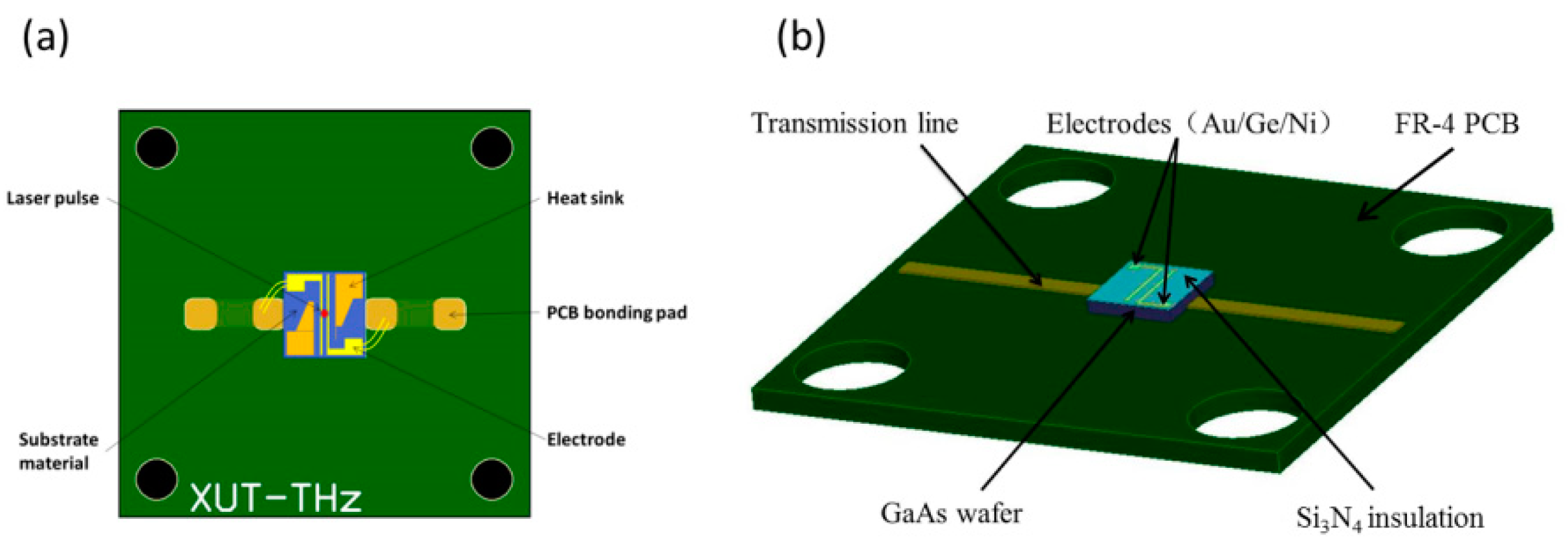
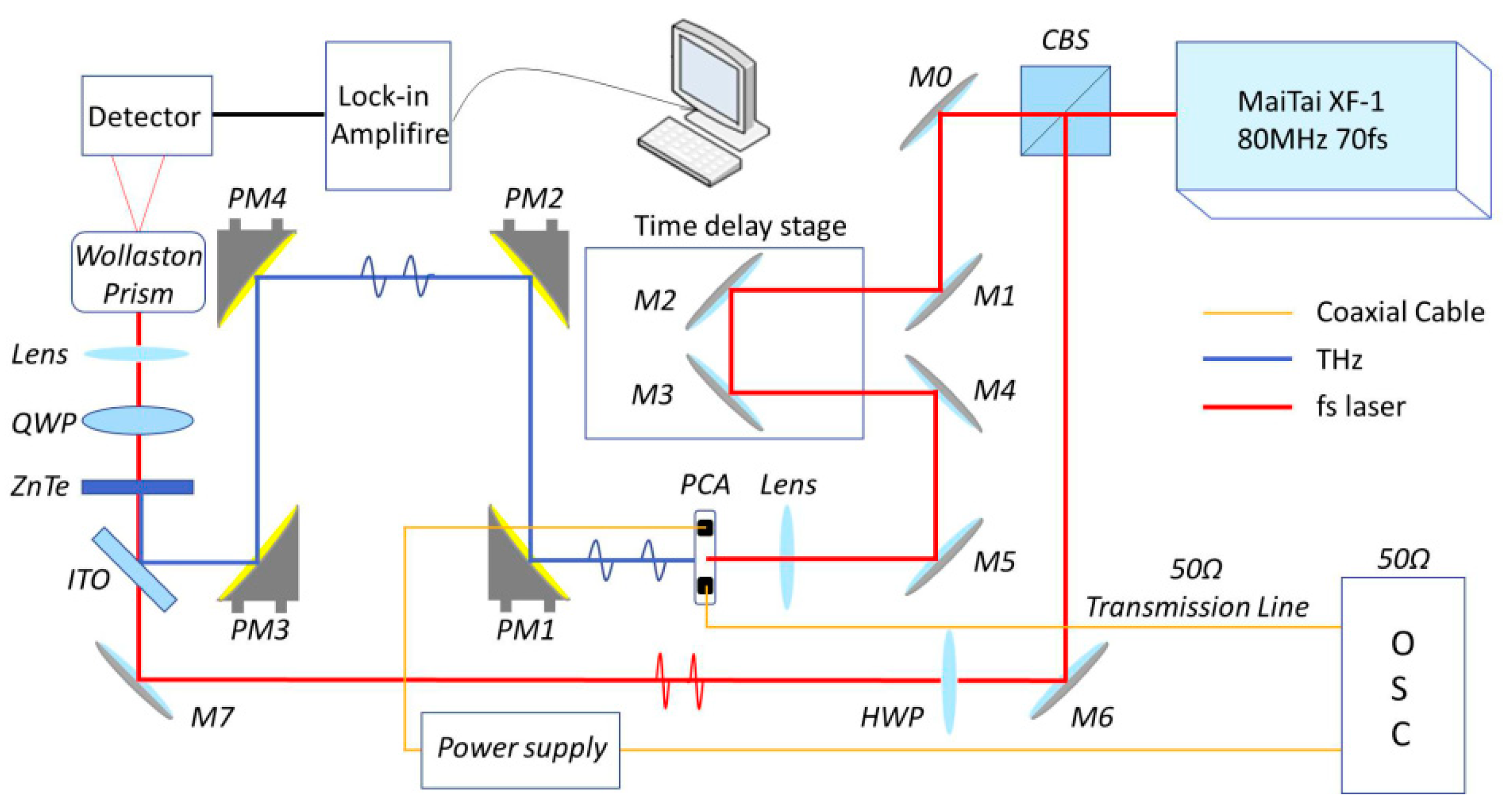
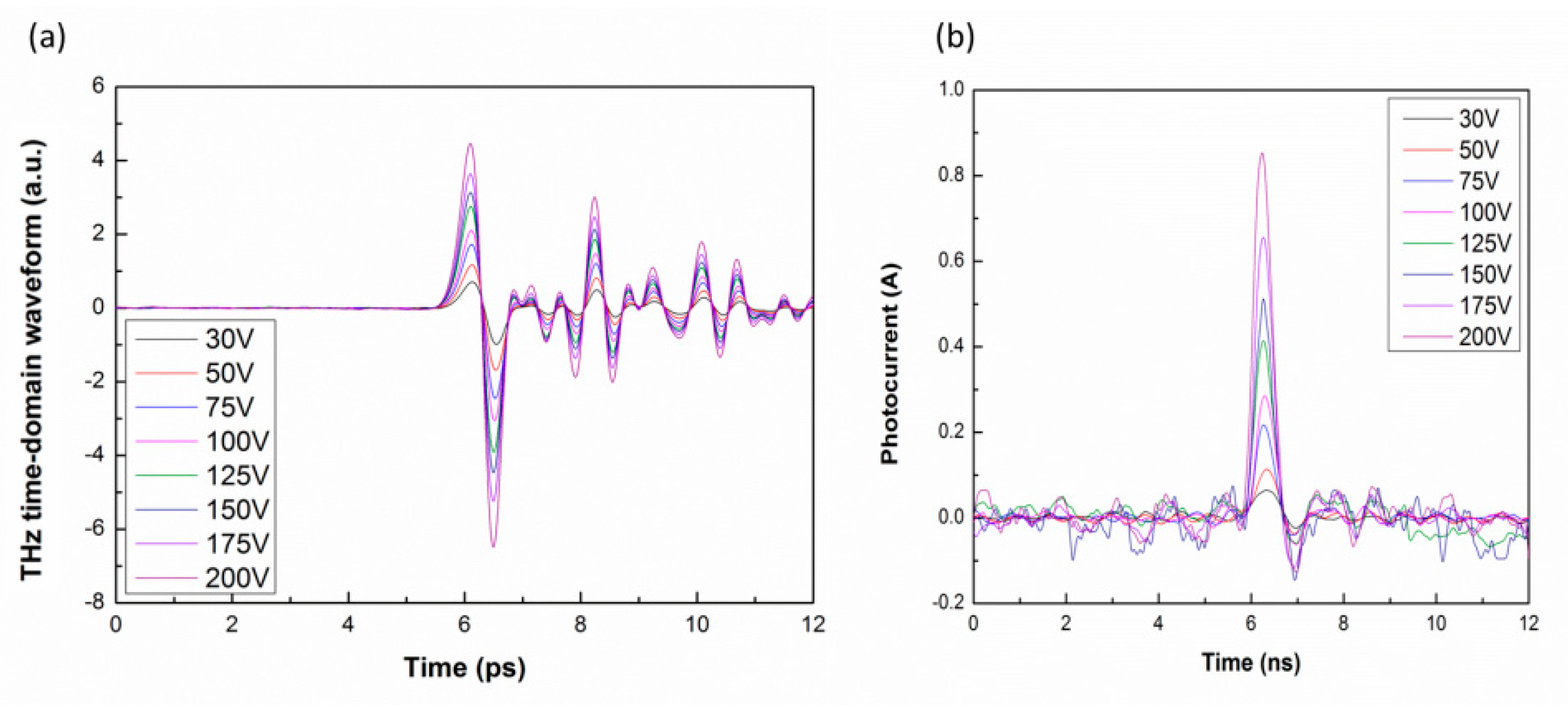
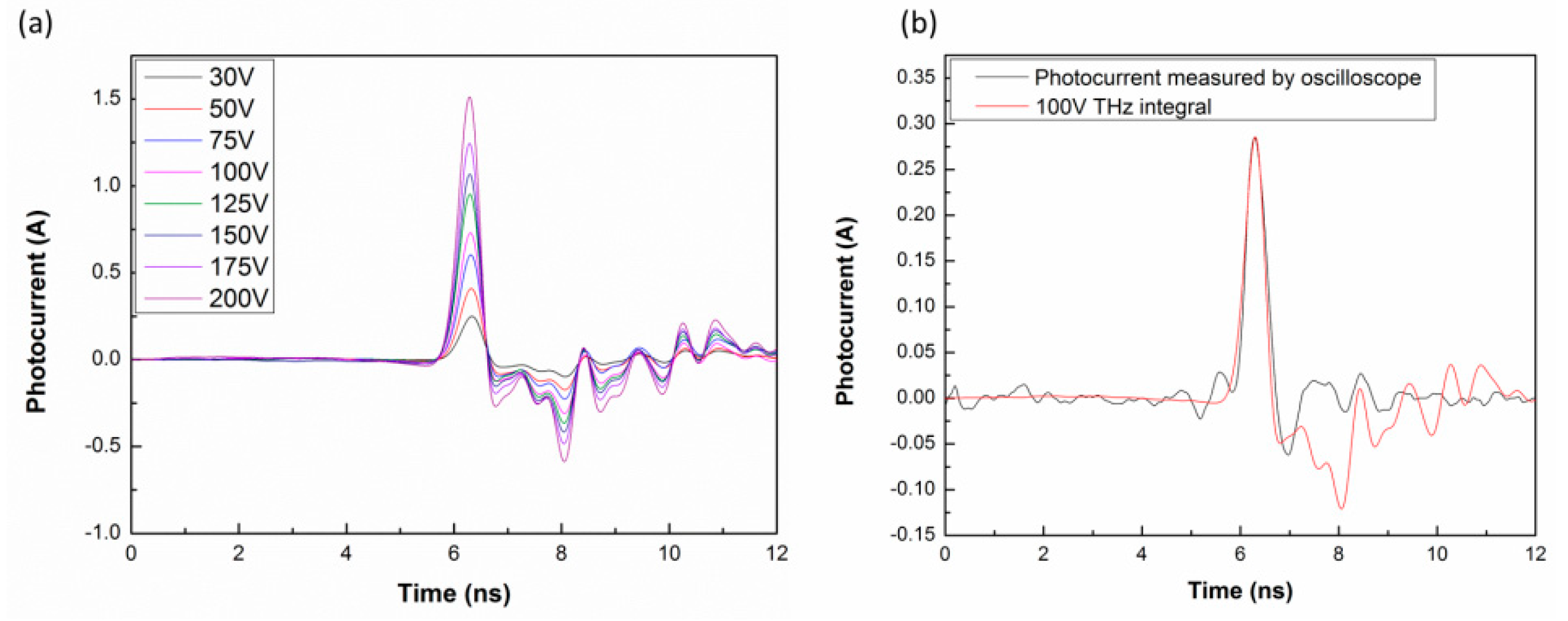
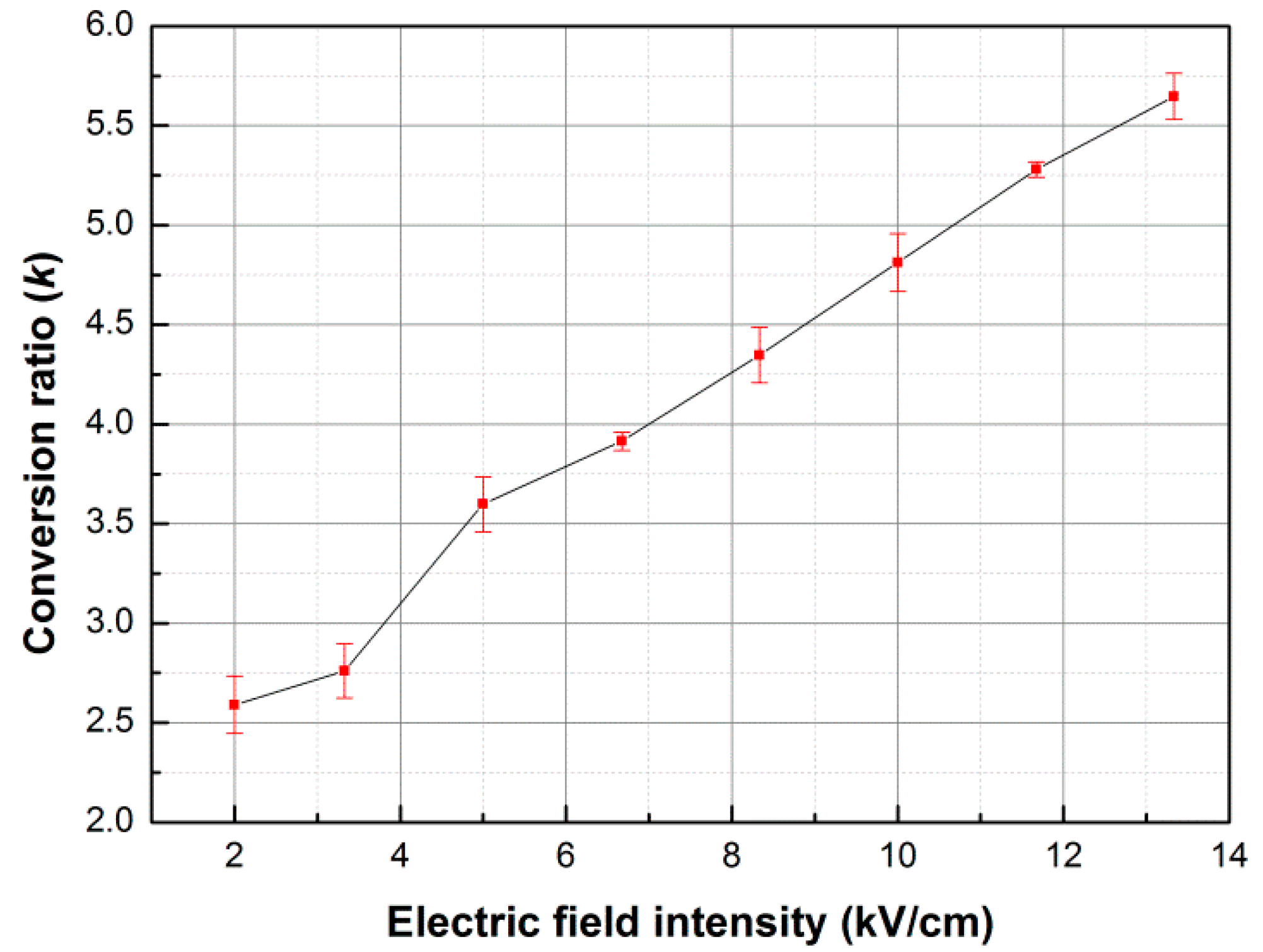

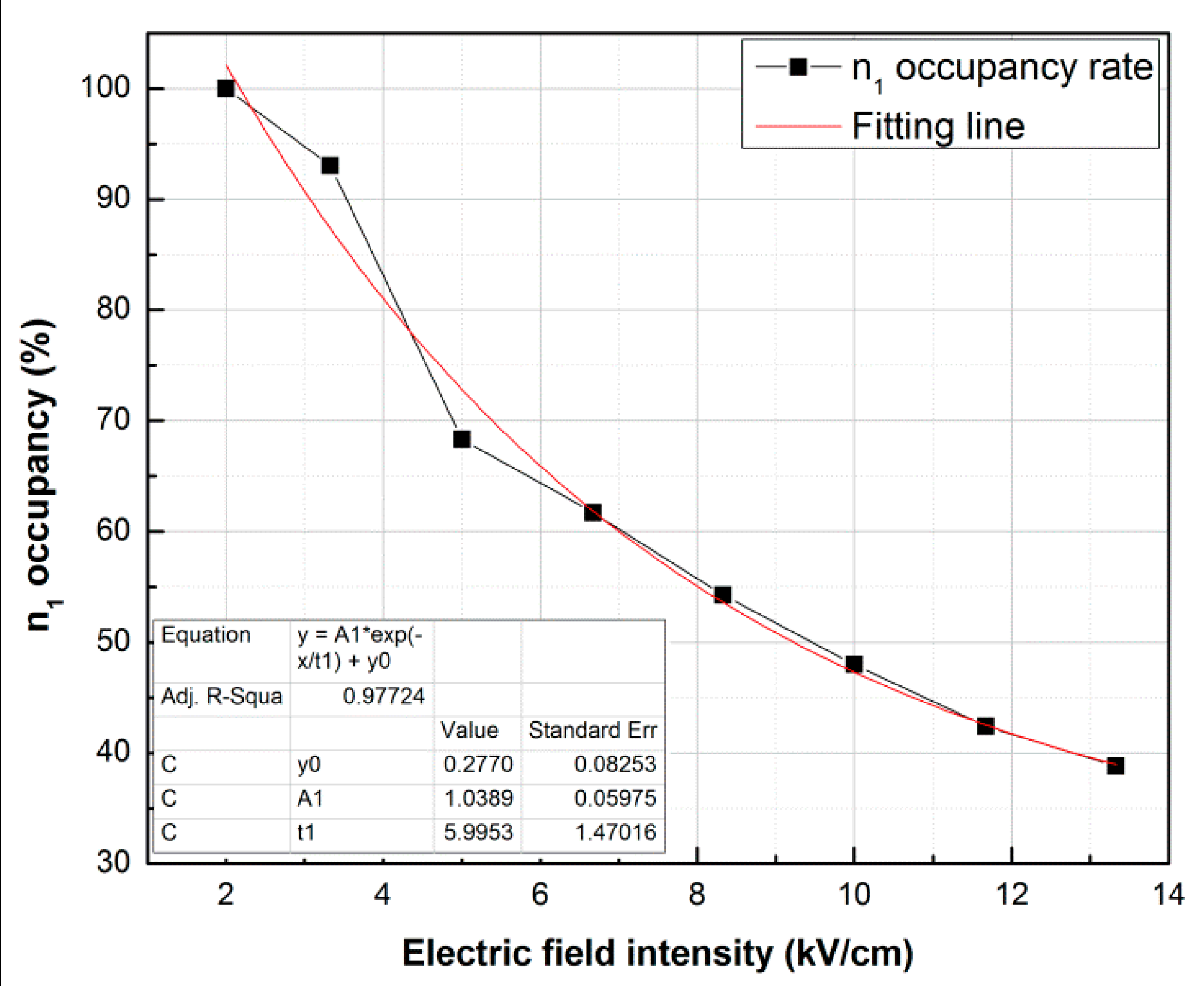
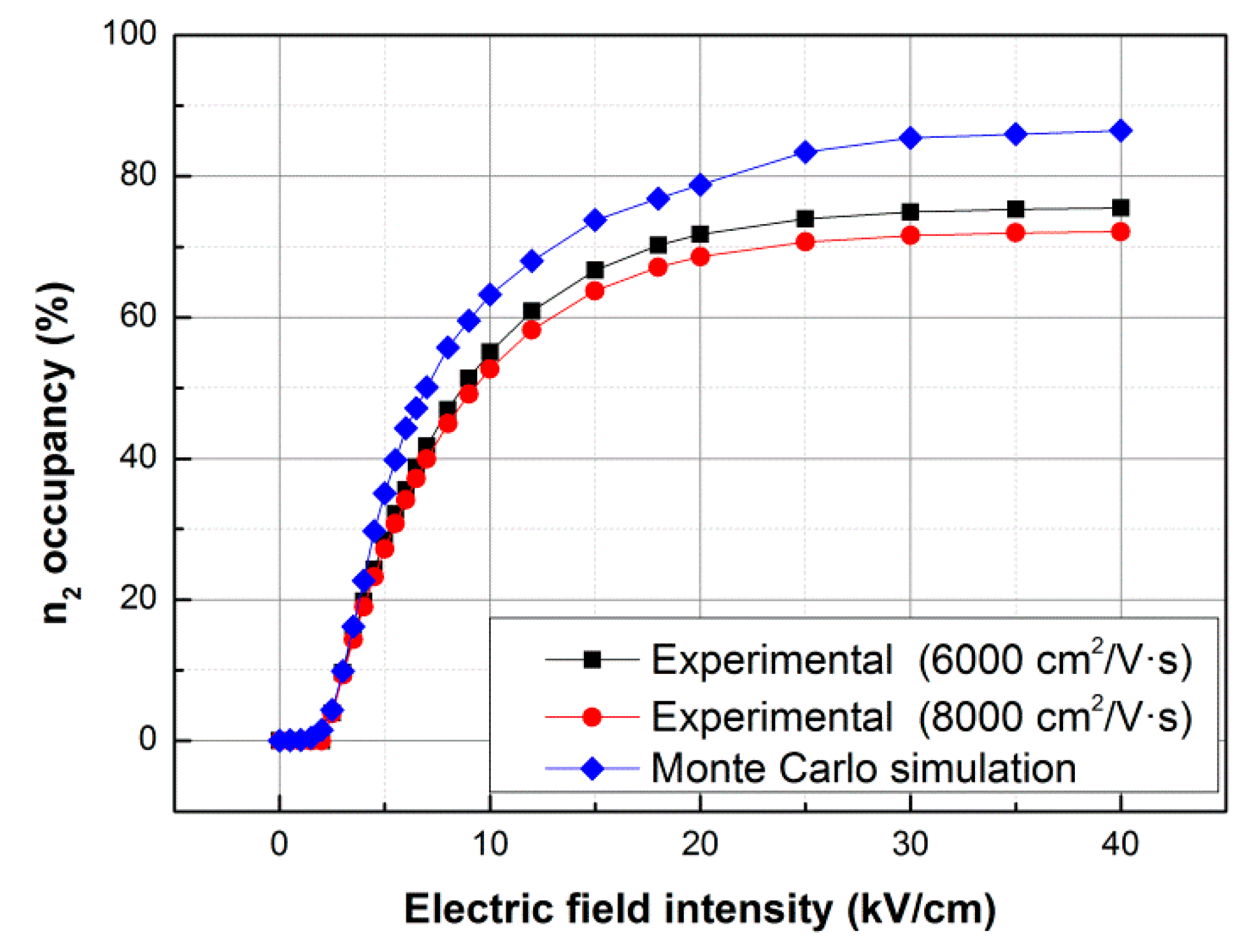
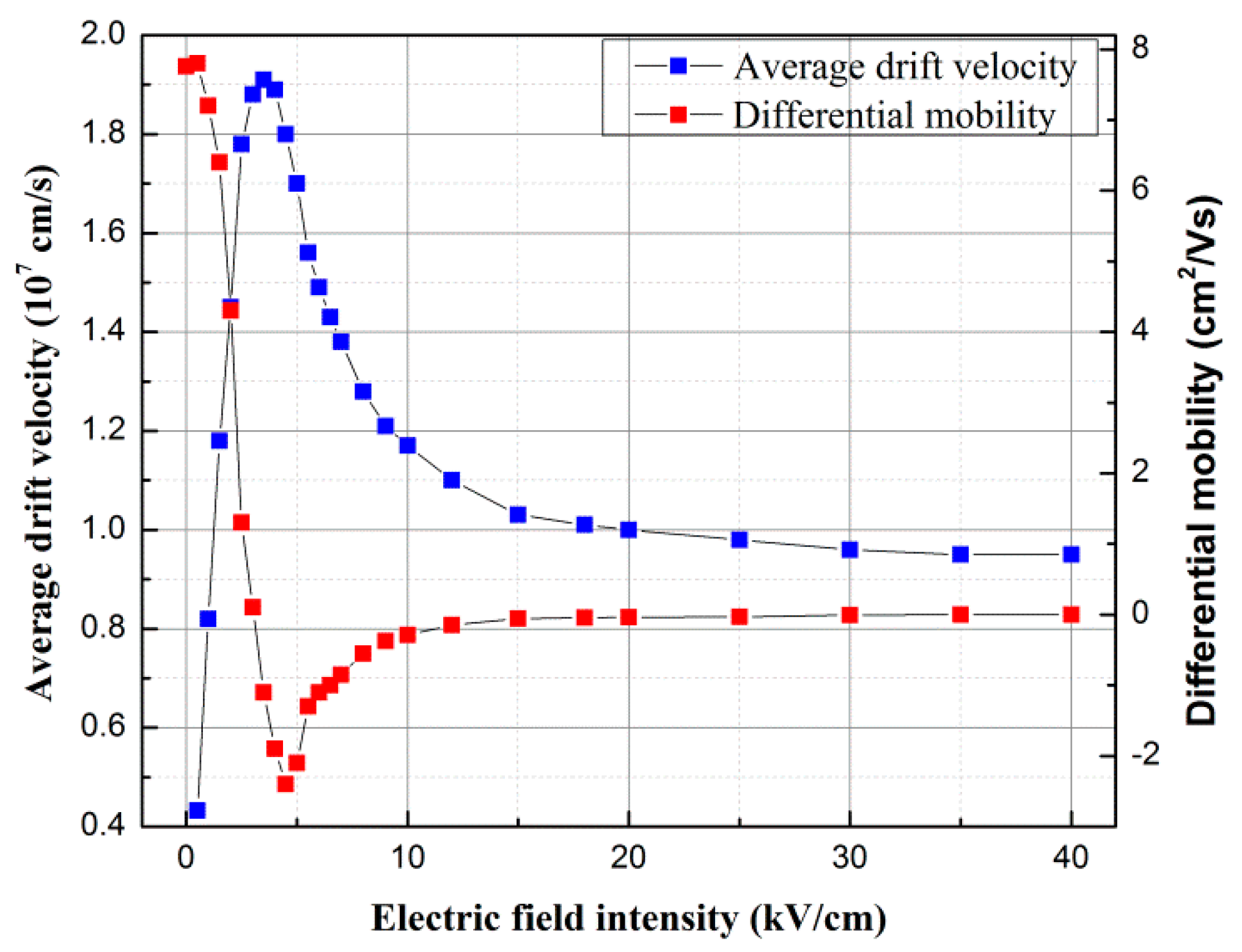
| Biased Electric Field (kV/cm) | |||
|---|---|---|---|
| 2.00 | 2.59 × 105 | ~100% | ~100% |
| 3.33 | 2.76 × 105 | 92.73% | 93.04% |
| 5.00 | 3.60 × 105 | 66.93% | 68.30% |
| 6.67 | 3.92 × 105 | 60.04% | 61.74% |
| 8.33 | 4.35 × 105 | 52.25% | 54.28% |
| 10.00 | 4.80 × 105 | 45.46% | 47.98% |
| 11.67 | 5.28 × 105 | 39.83% | 42.43% |
| 13.33 | 5.65 × 105 | 36.06% | 38.83% |
© 2019 by the authors. Licensee MDPI, Basel, Switzerland. This article is an open access article distributed under the terms and conditions of the Creative Commons Attribution (CC BY) license (http://creativecommons.org/licenses/by/4.0/).
Share and Cite
Dong, C.; Shi, W.; Xue, F.; Hang, Y. Multi-Energy Valley Scattering Characteristics for a SI-GaAs-Based Terahertz Photoconductive Antenna in Linear Mode. Appl. Sci. 2020, 10, 7. https://doi.org/10.3390/app10010007
Dong C, Shi W, Xue F, Hang Y. Multi-Energy Valley Scattering Characteristics for a SI-GaAs-Based Terahertz Photoconductive Antenna in Linear Mode. Applied Sciences. 2020; 10(1):7. https://doi.org/10.3390/app10010007
Chicago/Turabian StyleDong, Chengang, Wei Shi, Fei Xue, and Yuhua Hang. 2020. "Multi-Energy Valley Scattering Characteristics for a SI-GaAs-Based Terahertz Photoconductive Antenna in Linear Mode" Applied Sciences 10, no. 1: 7. https://doi.org/10.3390/app10010007
APA StyleDong, C., Shi, W., Xue, F., & Hang, Y. (2020). Multi-Energy Valley Scattering Characteristics for a SI-GaAs-Based Terahertz Photoconductive Antenna in Linear Mode. Applied Sciences, 10(1), 7. https://doi.org/10.3390/app10010007





